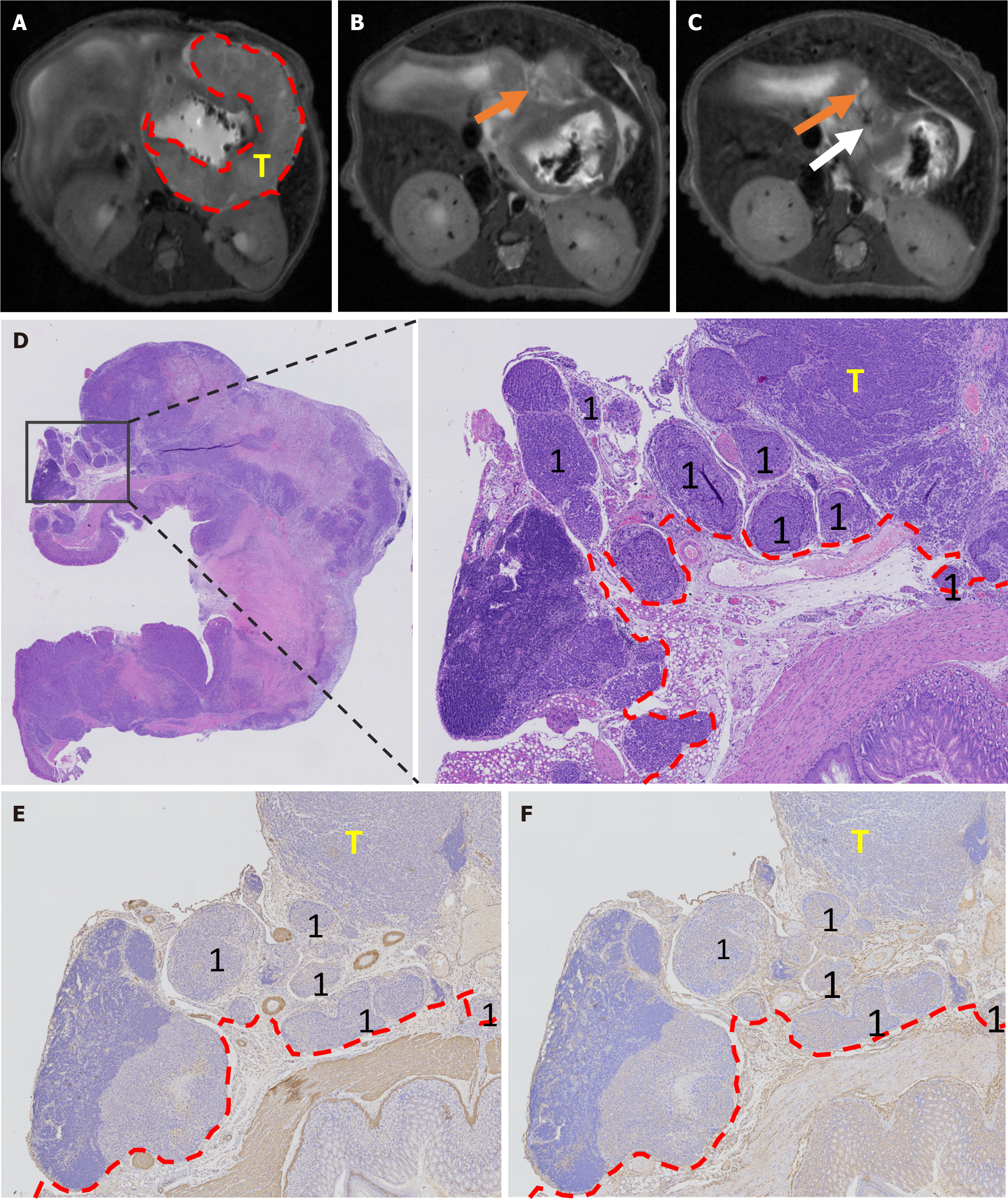Copyright
©The Author(s) 2025.
World J Gastroenterol. Apr 14, 2025; 31(14): 99897
Published online Apr 14, 2025. doi: 10.3748/wjg.v31.i14.99897
Published online Apr 14, 2025. doi: 10.3748/wjg.v31.i14.99897
Figure 4 Extramural venous invasion in gastric cancer orthotopic mouse model perpendicular to the plane of magnetic resonance imaging axial image.
A: T2-weighted fat-suppressed images, gastric cancer is manifested as a significant thickening of the gastric wall with heterogeneous signal intensity (within the red circle); B: Extramural venous invasion-detected detected on magnetic resonance imaging (mrEMVI) is visible as a tubular structure with a slightly high signal (orange arrow); C: This tubular structure can be observed in continuous layers and is connected to both the tumor and nearby blood vessels (white arrow); D: Hematoxylin and eosin staining of tumor (10 × and 200 ×); E: Alpha-smooth muscle actin staining (200 ×); F: CD34 staining (200 ×). 1Extramural venous invasion; T: Tumor; red dashed line: Tumor boundary.
- Citation: Feng CZ, Gou XY, Liu YQ, Xin YW, Zhang YL, Zhao HM, Wei SC, Hong N, Wang Y, Cheng J. Extramural venous invasion in gastric cancer: 9.4T magnetic resonance imaging assessment and circular RNA functional analysis. World J Gastroenterol 2025; 31(14): 99897
- URL: https://www.wjgnet.com/1007-9327/full/v31/i14/99897.htm
- DOI: https://dx.doi.org/10.3748/wjg.v31.i14.99897









